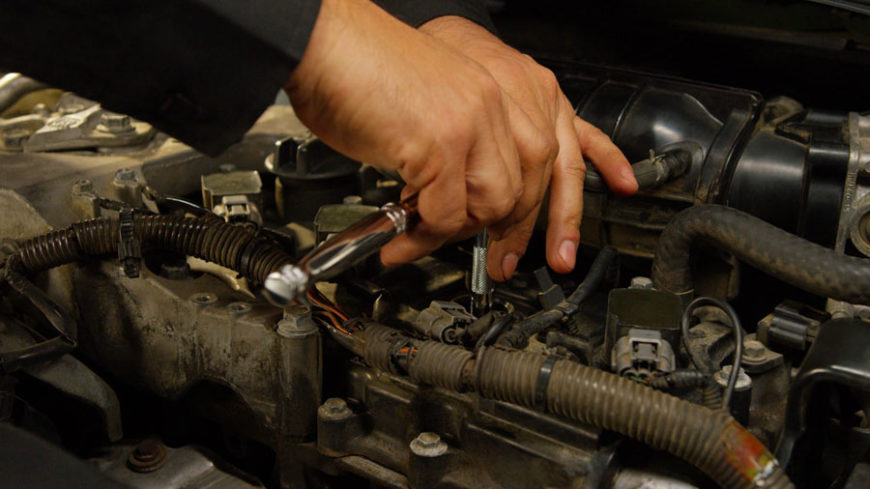Changing spark plugs is essential for your car’s performance. But what comes next?
After changing spark plugs, there are a few crucial steps to ensure your engine runs smoothly. These steps will help you avoid issues and keep your vehicle in top shape. Proper maintenance can extend your car’s life and improve its efficiency.
Following the right procedures can also prevent potential damage and costly repairs. In this blog post, we’ll guide you through what to do after changing spark plugs. Whether you’re a seasoned car enthusiast or a beginner, these tips will help you maintain your vehicle’s performance. Let’s dive into the essential steps to take after replacing your spark plugs.
Check The Spark Plug Gap
Always use a gap tool to measure the spark plug gap. The gap should match the specifications in your car’s manual. Insert the gap tool into the gap of the spark plug. Check the reading on the tool. If the gap is too wide or too narrow, it needs adjusting.
If the gap is incorrect, gently bend the electrode. Use the tool to adjust. Be careful not to damage the spark plug. Recheck the gap using the tool. Repeat until the gap is correct. This ensures the spark plug works properly.

Credit: www.reddit.com
Inspect Ignition Coils
Check the ignition coils closely. Look for cracks or burn marks. Damaged coils can cause misfires. Misfires make the engine run poorly. Replace any damaged coils immediately. This will help keep your engine running smoothly.
Dirty coils can cause problems. Use a clean cloth to wipe them. Remove all dust and dirt. Clean coils work better. This helps your car perform well. Always keep your coils clean.
Reconnect The Battery
After changing spark plugs, reconnect the battery. Tighten the terminals to ensure a good connection. Loose terminals can cause issues. Use a wrench to tighten them properly. Be careful not to over-tighten. Check for corrosion on the terminals. Corrosion can affect the connection. Clean the terminals if needed. Use a wire brush or battery cleaner. Ensure the terminals are shiny and clean. This helps maintain a strong connection.

Credit: www.youtube.com
Start The Engine
After changing the spark plugs, start the engine. Pay close attention to the sounds. Unusual noises may indicate a problem. Listen for clanking, popping, or hissing sounds. These noises suggest something is wrong. If you hear them, turn off the engine. Check the connections and make sure everything is tight.
The engine should run smoothly. A smooth idle means the spark plugs are working well. Watch the tachometer. The needle should stay steady. If the engine shakes or the needle jumps, there may be an issue. Double-check the spark plugs. Make sure they are installed correctly. This helps ensure your car runs well.
Test Drive The Vehicle
Start by driving slowly. Listen for any unusual sounds. Feel the car’s response. Notice if there is smooth acceleration. Pay attention to any stalling or jerking. A smooth ride means the spark plugs are working well. If there are issues, it might mean a problem.
Write down any strange noises. Note if the car hesitates. Keep track of any misfires. Any rough idling should be recorded. These notes can help the mechanic. It makes fixing problems easier. Always keep a record of any changes.
Check Engine Light
After changing spark plugs, it is important to check the check engine light. Use an OBD-II scanner to scan for any error codes. This tool will help you identify any problems. If any codes appear, write them down. Look up the codes online or in your car manual. You might find issues related to the spark plug change.
Fix any problems that show up in the scan. Some problems may be simple. Others might need a mechanic’s help. Reset the check engine light after addressing the problems. This ensures the light does not stay on unnecessarily. Keep an eye on the engine light in the coming days. It should remain off if all is well.
Inspect Fuel System
Fuel injectors must be clean. Dirty injectors cause poor engine performance. Check for leaks around the injectors. Leaks lead to fuel wastage. Make sure injectors spray fuel evenly. Uneven spray affects engine power. A clean injector boosts fuel efficiency.
Inspect fuel lines for cracks or damage. Damaged lines can cause leaks. Leaks are dangerous and waste fuel. Ensure all connections are tight. Loose connections can lead to fuel loss. Replace any damaged lines immediately. This keeps the fuel system safe and efficient.

Credit: www.autozone.com
Review Maintenance Schedule
Check your car’s manual for the next service date. Regular services keep your car running well. Mark the date on your calendar. This helps you remember.
Write down the service details. Note the date and work done. Keep these records safe. They help track your car’s history. This is useful for future services.
Conclusion
Keep your car running smoothly after changing spark plugs. Check your work for any loose connections. Listen for unusual noises while driving. Regular maintenance keeps your engine healthy. Follow the manufacturer’s guidelines for future services. Keep a record of all maintenance tasks.
This helps in tracking your car’s performance. Drive safely and enjoy a smoother ride.
